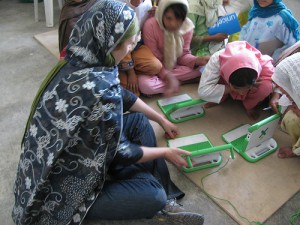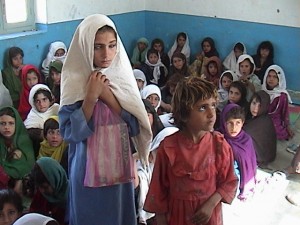“First, I think girls’ education may be the single most cost-effective kind of aid work. It’s cheap, it opens minds, it gives girls new career opportunities and ways to generate cash, it leads them to have fewer children and invest more in those children, and it tends to bring women from the shadows into the formal economy and society.”
– Nicholas Kristof, Pultizer-Prize winning humanitarian journalist of The New York Timesand co-author of Half the Sky
Today’s world is one of tremendous struggle for many countries and world citizens, yet there is one group that is underrepresented more than others: young girls, and particularly when it comes to their education and other opportunities. Studies show that only a fifth of girls in the developing world have the chance to finish primary school, and furthermore, only one third of countries have equal amounts of girls and boys in secondary schools.
What this means is that there are millions, 500 million to be exact, girls who are not being given the chance to live up to their full potential. By removing them from, or just not letting them go to school, we are removing their ability to be an important asset and member of society. Irina Bokova, head of the United Nations Education, Scientific, and  Cultural Organization (UNESCO) said that educating girls does the following: “It enhances their opportunities to contribute to the development of their societies, to feel an integral part of them, and to benefit their families.”
Cultural Organization (UNESCO) said that educating girls does the following: “It enhances their opportunities to contribute to the development of their societies, to feel an integral part of them, and to benefit their families.”
Though the topic of educating girls is broad, nearly every country has their own problems with educating girls. In this post I would specifically like to focus on Afghanistan; the efforts being made to educate girls, and the attempts being made to hold them back.
Over 65% of those living in Afghanistan are under the age of 25, making it one of the youngest countries in the world. However, Afghanistan also has the largest illiteracy rate in the world. There are over 4.2 million children in the country who have not gotten an education, and well over half of those children are girls – despite the fact that females outnumber men in Afghanistan.
It has barely been ten years since girls and young women regained the right to go to school in Afghanistan after the fall of the Taliban in 2001, however, for many it is still a struggle to get the education that would benefit not only them, but also the societies the communities in which they live in. In Afghanistan in the year 2008 there were 92 deaths, 169 injuries, and 283 violent attacks on schools working to educate girls and young women. In May alone  there were several attacks made on girls attending schools in Afghanistan. Just earlier this month, 150 Afghan schoolgirls were sent to the hospital on suspected poisoning, something that is sadly not a new problem for girls attending school in Afghanistan. This was sadly repeated just a few weeks later when 80 more girls were hospitalized for a similar reason.
there were several attacks made on girls attending schools in Afghanistan. Just earlier this month, 150 Afghan schoolgirls were sent to the hospital on suspected poisoning, something that is sadly not a new problem for girls attending school in Afghanistan. This was sadly repeated just a few weeks later when 80 more girls were hospitalized for a similar reason.
Studies show that working to educate girls can increase the GDP of the countries that they live in. This means that educating girls is not just important to empower the girls and future women leaders, but it is also important for the stability of the country. If more girls in Afghanistan were to be educated, the average family income would increase by 25%.
There is some good news, the number of children getting an education in Afghanistan has increased by 7 million in the last ten years, making the total number of children attending schools in the country 8.3 million. However, only 39% of the girls in Afghanistan are accounted for in these numbers.
It is a comment notion that education equates to empowerment and Nelson Mandela once said that “Education is the most powerful weapon which you can use to change the world,” and this is exactly what we need to be focusing on with efforts to educate girls.
Luckily for the girls in Afghanistan, they are on UNESCO’s radar, as Ms Bokova has decided to create special efforts to focus on Afghanistan, specifically on education for their population of women and girls. If all goes well, 600,000 women and girls will gain access to education in Afghanistan. Success would mean not only empowering the girls, but empowering the country as a whole. It would lead to increased GDP, and increased family wealth.
In 2009 the United Nations estimated that 35 million girls were not enrolled in primary schools, meaning that there is still a lot of work to get done. As a writer I encourage you to do your own research on the topic. There is no end of organizations trying to make a difference and help support girls in this global movement. There is The Girl Effect, an organization working to put girls at the top of the agenda for 2015. For those of you who want a more concrete example, there is the film Girl Rising, which is all about the power that education can have on girls. Or for a shorter clip, you can check out this TEDxTalk by Shabana Basij-Rasikh that details her experience of getting an education in Afghanistan. If you want to get involved yourself, I encourage you to add your story to CNN. The more we pay attention, the more we help, the farther girls will get in education, the more the world will grow.


